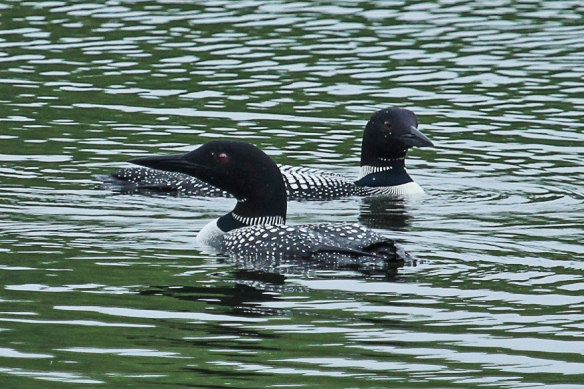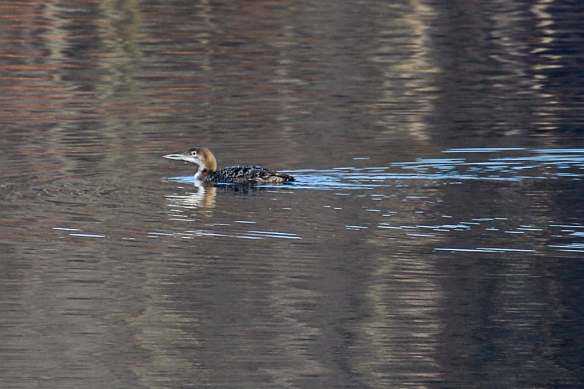
What strange-looking bird is that, swimming through the multi-hued water? The reflections in the water come from the birch, evergreen conifers, and the few oaks still retaining orange-brown leaves that line the shore of Lake Vadnais.
While watching Redheads and Ring-necked Ducks the other day on the St. Paul reservoir at Lake Vadnais, I spotted this lone bird, repeatedly diving while unfortunately swimming away from me. It didn’t look like a duck, or a grebe, so perhaps it was a loon — but like no loon I’ve seen before.

Common Loons I photographed in May have distinctive dark heads, black beaks, white breasts, and spotted backs. This is the typical breeding plumage seen in loons from about March to September. During the winter, Common Loons have gray heads and necks (see illustration below).

Unfortunately, the bird was just too far away to get a good shot with the telephoto lens, even by cropping the image. It has a loon-looking bill, but the colors are not really typical of the winter plumage of a Common Loon either.

A little research on the plumages of the various Loon species reveals that mystery bird is most likely a juvenile Common Loon, judging from the brownish head coloration, pale bill, partial white neck collar, and scalloped brown and white plumage of the back feathers. This illustration is from the Sibley Field Guide to Birds of North America.
Young Common Loons are on their own about 12 weeks after hatching, while their parents prepare for migration south to coastal waters of North America. Juvenile birds remain on the lakes where they were raised, sometimes gathering in small groups, and migrate much later in the Fall than their parents — their route pre-programmed as an instinctive behavior.
Unlike their parents, though, these young birds remain in coastal environments for another couple of years, only returning north as mature adults in their third year. However, even then, they may not breed until they are six years old, which implies that these birds are relatively long-lived in the wild. In fact, the longest-lived Common Loon was determined to be 24 years old, returning each year to the same lake in Michigan to breed.
